ENQUETE
特集:201201 2011-2012年の都市・建築・言葉 アンケート<トーマス・ダニエル
This year has been a series of tragedies, and memorials to tragedies. At the largest, most horrific scale these included the 2/22 quake that struck my homeland of New Zealand, the 3/11 quake that struck my adopted homeland of Japan, and, completed just in time for the tenth anniversary of 9/11, Michael Arad and Peter Walker's memorial in Manhattan. At a smaller, deeply personal -- yet no less significant -- scale, three new Maggie's Cancer Caring Centers (by Rem Koolhaas, Piers Gough, and the late Kisho Kurokawa) were completed in the UK this year. These are the latest results of an ongoing initiative by Charles Jencks, instigated by his wife Maggie shortly before she succumbed to cancer in 1995. Similarly, the new Toyo Ito Museum of Architecture in Omishima includes a replica of Silver Hut (Ito's own house, built in 1984) intended as a memorial to his wife, who also died of cancer.Unsurprisingly, Shigeru Ban has been at the forefront of architectural responses to the disasters of 2011. These range from his ingenious partitioning system to provide a degree of privacy and dignity for those survivors of the Tohoku earthquake forced to live in places such as high-school gymnasiums, to his proposal for a cardboard-structured church that will replace the beloved stone cathedral in Christchurch -- which had been the venue for the wedding ceremonies of many visiting Japanese couples over the last few decades. New Zealand architect Ian Athfield, a Christchurch native and local hero, is leading the push for a more intelligent replanning of Christchurch, while the University of Auckland architecture school has been working with Architecture for Humanity's Cameron Sinclair to make proposals for the reconstruction of Christchurch and Maeamihara (a devastated fishing village in the Tohoku region).
The sobriety and reconsideration of the architect's mandate entailed by such events does not, of course, entail dull architecture. This year's Shenzhen & Hong Kong Bi-City Biennale of Urbanism\Architecture, curated by Terence Riley on the theme "Architecture Creates Cities. Cities Create Architecture," showcases some incredibly inventive work. The ubiquitous Bjarke Ingels continues to astound with his program of "hedonistic sustainability," exemplified by a recent competition-winning proposal for an artificial ski slope in the middle of Copenhagen that will conceal an enormous waste-to-energy plant -- to be the tallest building in the city and one of the cleanest such facilities in the world when it is completed in 2016.
This year also saw ongoing commemorations of the founding of Metabolism, the key postwar avant-garde movement in Japanese architecture, including a superb retrospective exhibition held at the Mori Art Museum and its associated catalog. A more critical examination of the movement can be found in the book Project Japan: Metabolism Talks, which comprises a comprehensive set of interviews of the key figures in and around Metabolism, conducted by Rem Koolhaas and Hans Ulrich Obrist. The visionary cities of Metabolism were inspired and energized by the exigencies of reconstructing Japan's cities after the devastating bombing campaigns in the final months of the Second World War. While this seems entirely relevant to the present day, the book's afterword by Toyo Ito implores Japanese architects to behave with modesty and intelligence in the wake of 3/11. Indeed, the key event next year will be the Japanese Pavilion exhibition at the Venice Biennale, curated by Ito. Intended as a collaboration with photographer Naoya Hatakeyama (who lost his family home on 3/11), and architects Kumiko Inui, Sou Fujimoto, and Akihisa Hirata, the project will poignantly echo the prize-wining Japanese Pavilion exhibition at the 1996 Venice Biennale, which focused on the 1995 Kobe Earthquake.
Needless to say, Japan is guaranteed to experience similar events again -- and again, and again. The northeast coastline of Japan is dotted with "tsunami stones": megaliths up to three meters tall and six centuries old, engraved with warnings to run inland the moment an earthquake hits, or not to build any closer to the sea than where they are embedded. Over the centuries, the latter warnings had been increasingly ignored, sea walls and modern communication technologies supposedly making them redundant. With the 20/20 hindsight of an armchair expert it's easy enough to criticize the complacency and willful ignorance, the unpreparedness, the shocking vulnerability of the nuclear facilities, and so forth. At the same time, we shouldn't lose sight of the amazing lack of damage to buildings in Tokyo and elsewhere, the minimal loss of life due to the earthquake alone. And of course, the only salient issue is what to do now, once the mess has been cleaned up and the dead buried. No matter how sophisticated our defensive measures become, there is always going to be a tsunami bigger than any sea wall, an earthquake stronger than any building foundation. In Japan, and elsewhere, all that can be done is to create architecture and infrastructure that demonstrates intelligence in its construction, respect for its users, and humility toward the blind forces of the natural world.
-
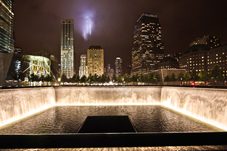
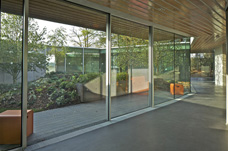
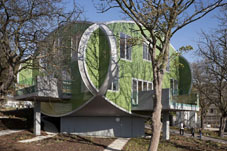
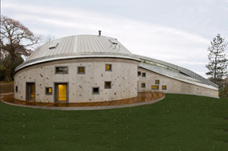
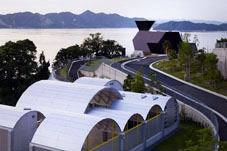
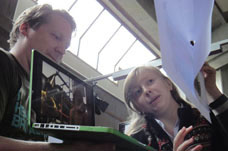
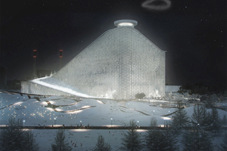
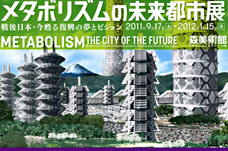
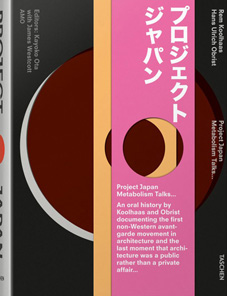
- Michael Arad and Peter Walker, 9/11 Memorial, New York (photo by Joe Woolhead) / OMA, Maggie's Center, Gartnavel (photo by Philippe Ruault) / Piers Gough, Maggie's Center, Nottingham (photo by Martine Hamilton-Knight) / Kisho Kurokawa, Maggie's Center, South West Wales (photo by Lorenz Haarmann) / Toyo Ito, Toyo Ito Museum of Architecture + Silver Hut, Omishima (photo by Daici Ano) / Cameron Sinclair of Architecture for Humanity working with students at the University of Auckland, talking to people in Tohoku via Skype (photo by Alexandra JaYeun Lee) / Bjarke Ingels, Waste-to-Energy Plant, Copenhagen (image courtesy BIG) / Mori Art Museum, Metabolism: City of the Future exhibition poster / Rem Koolhaas and Hans Ulrich Obrist (eds), Project Japan: Metabolism Talks (Taschen)





